Sun-Dried Tomato And Spinach Ravioli Recipe
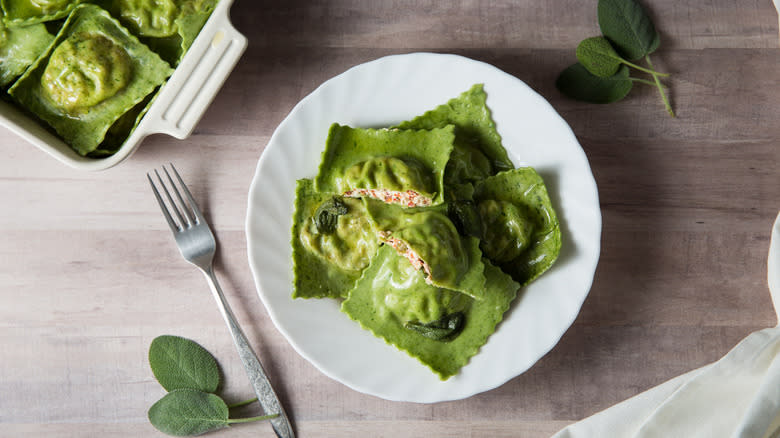
Making ravioli is one of those culinary activities that seems intimidating. After a gentle learning curve, however, you'll find that ravioli can be pretty simple to make at home. You can always buy fresh or frozen ravioli at the market, but making a homemade batch lends a freshness and sense of satisfaction that the boxed versions lack. An additional advantage is that you can be more creative with your dough and filling flavors when you make it from scratch.
This sun-dried tomato and spinach ravioli recipe from recipe developer Michelle Bottalico is a good example of the potential for creativity. When the spinach is added to the dough itself, it colors it a vivid green, as well as making it more nutritious. Sun-dried tomatoes mixed with ricotta, capers, and basil make for an easy filling that also adds a bright red pop of color once the ravioli are cut open. The result is a delicate dough and a filling with a strong Mediterranean flavor, all of which is made even better with a rich and fragrant butter sage sauce.
The recipe takes you step by step through the process of making egg pasta dough, rolling it out using a pasta machine, and filling, sealing, and cutting out the ravioli. Extra tips at the end discuss flour choices and alternative tools you can use instead of a pasta machine. Read on to discover how to make these delicious ravioli for your next special Italian meal.
Read more: 26 Types Of Pasta Sauce Explained
Gather Your Sun-Dried Tomato And Spinach Ravioli Ingredients
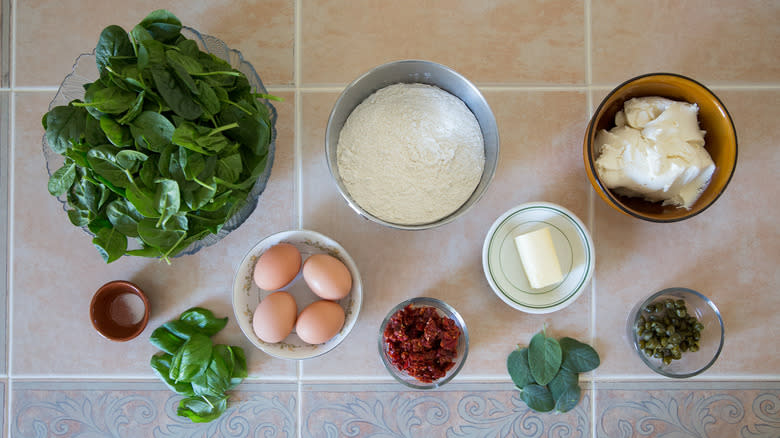
The dough's bright green color is achieved by adding spinach to an egg pasta dough, so you'll need fresh spinach to make it. The other ingredients are 00 flour, eggs, and salt. 00 flour is the best option to use for pasta dough, but if it's not available, you can use all-purpose flour instead.
For the filling, you will need ricotta, sun-dried tomatoes, capers, and fresh basil leaves. Try to get sun-dried tomatoes that aren't packed in oil, because you don't want the filling to be too moist and cause the ravioli to break open. If you need to buy the oil-packed kind, drain and dry them well. For the same reason, blot the capers dry too. Finally, as the name suggests, the butter sage sauce's ingredients are just butter and sage.
Step 1: Boil The Water
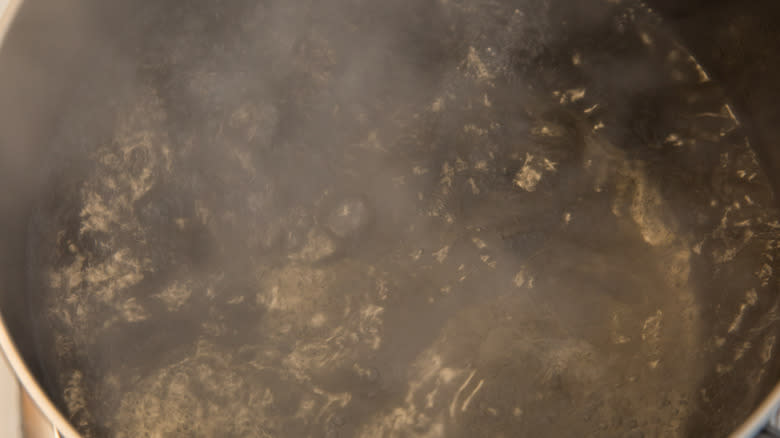
To make the green dough, first bring a large pot of salted water to a boil.
Step 2: Cook The Spinach
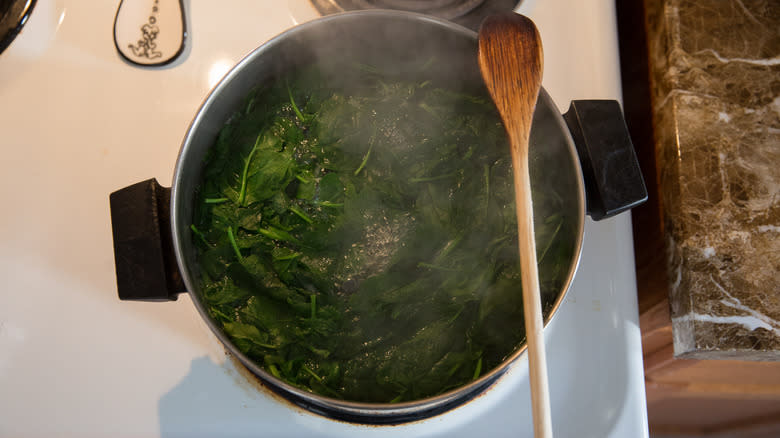
Cook the spinach in boiling water for 2 minutes.
Step 3: Drain The Spinach
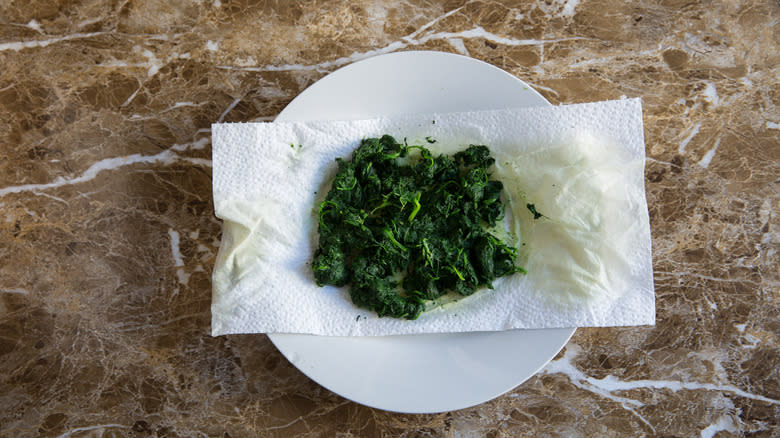
Drain the spinach, let cool, and squeeze out as much water as you can. Dry it well.
Step 4: Mince The Spinach
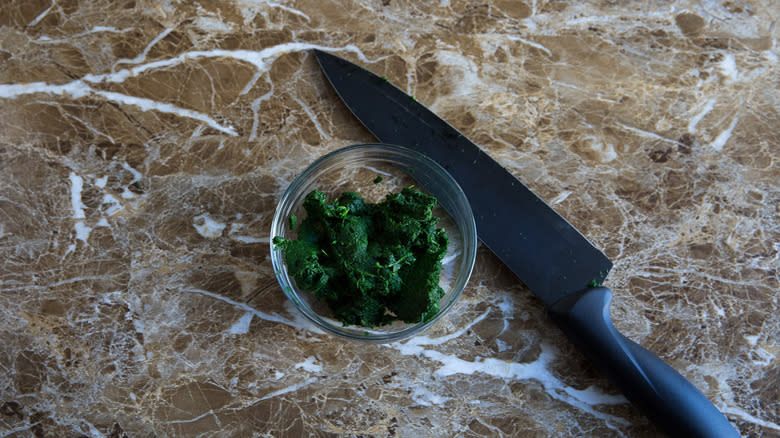
Mince the spinach.
Step 5: Place The Dough Ingredients In Bowl
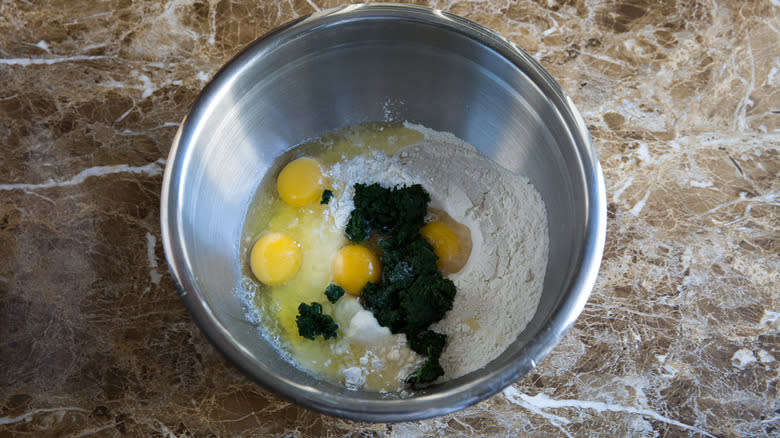
Place the flour, eggs, salt, and spinach in a large bowl.
Step 6: Mix The Dough Ingredients
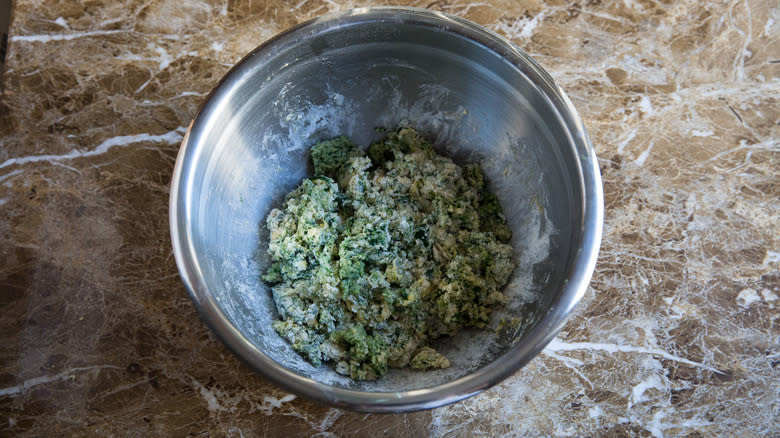
Mix the ingredients with your hands, pinching the eggs and spinach into the flour until the mixture mostly sticks together.
Step 7: Transfer The Dough To Your Work Surface
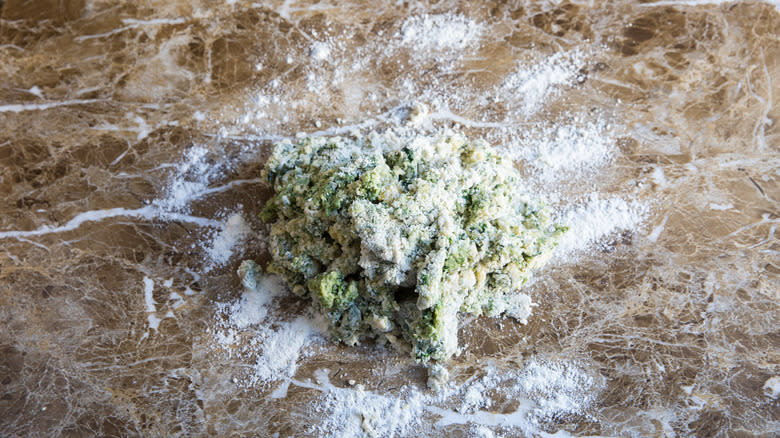
Transfer the mixture to a lightly floured work surface.
Step 8: Start Kneading The Dough
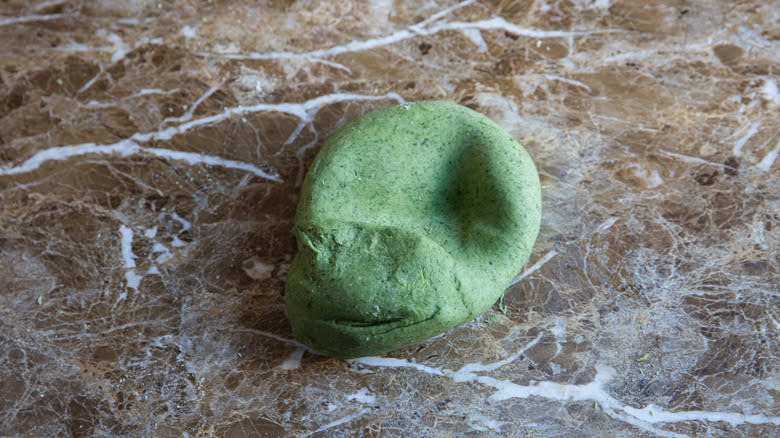
Form a ball and knead for about 10 minutes, turning it a half turn each time, folding it on itself and pressing and rolling it forward with your palms. Add a very small amount of water if it's too crumbly or flour if it's too sticky.
Step 9: Finish Kneading The Dough
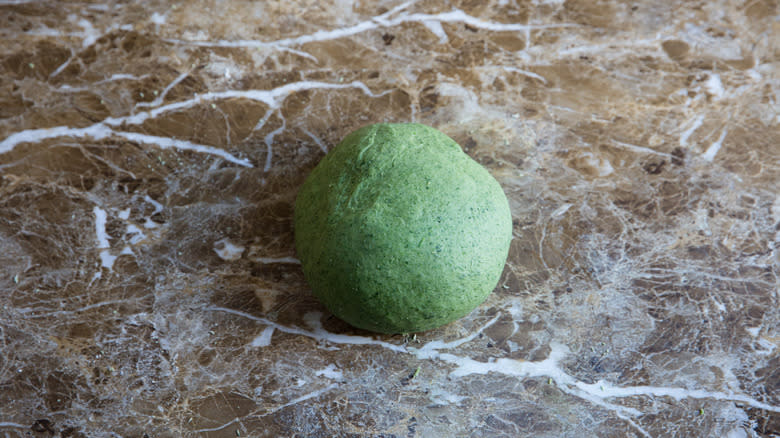
Knead until you achieve a smooth, elastic ball that slowly springs back when pressed.
Step 10: Let The Dough Rest
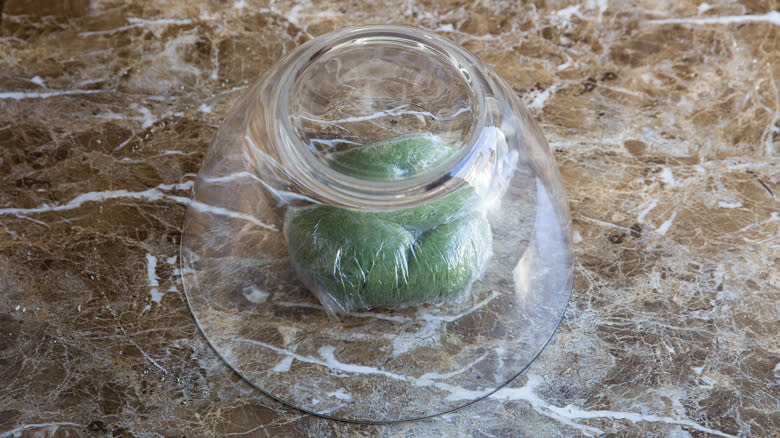
Cover the dough ball with plastic wrap or a damp towel and place an overturned bowl on top of it to keep it moist. Let it rest for 30 minutes at room temperature.
Step 11: Make The Filling
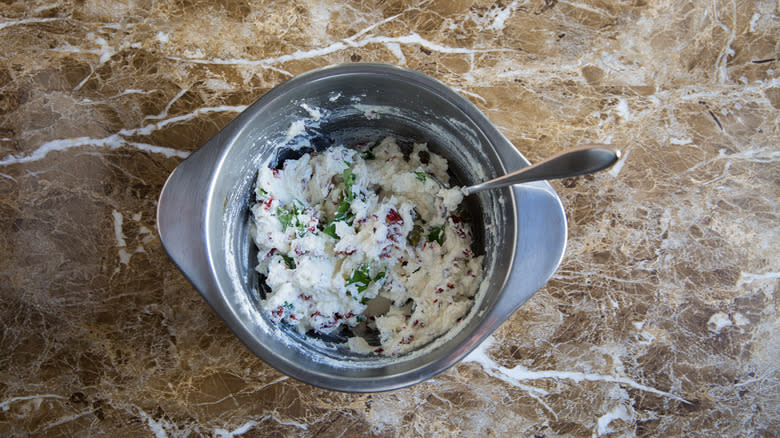
To make the filling, place the ricotta in a medium bowl, add the sun-dried tomatoes, capers, and basil, and mix well with a spoon. Set aside.
Step 12: Divide The Dough
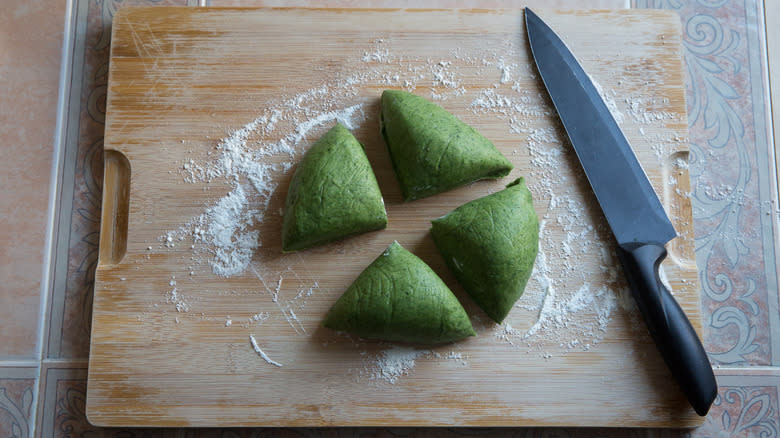
Cut the dough ball into 4 equal pieces. Take 1 piece and rewrap the other 3 pieces to keep it moist.
Step 13: Flatten One Piece Of Dough
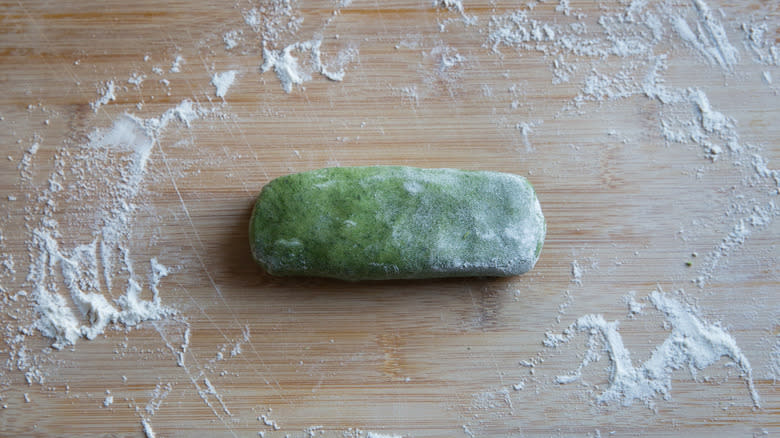
Shape 1 of the pieces with your hands into a flattened rectangular shape.
Step 14: Roll The Dough Through The Pasta Machine
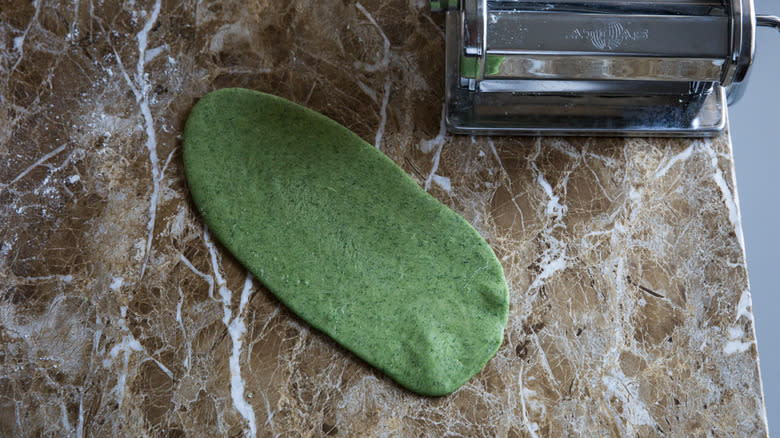
Roll the piece through a pasta machine using the thickest setting. Dust the piece with a small amount of flour after rolling if it's sticky or uneven.
Step 15: Fold The Dough Piece
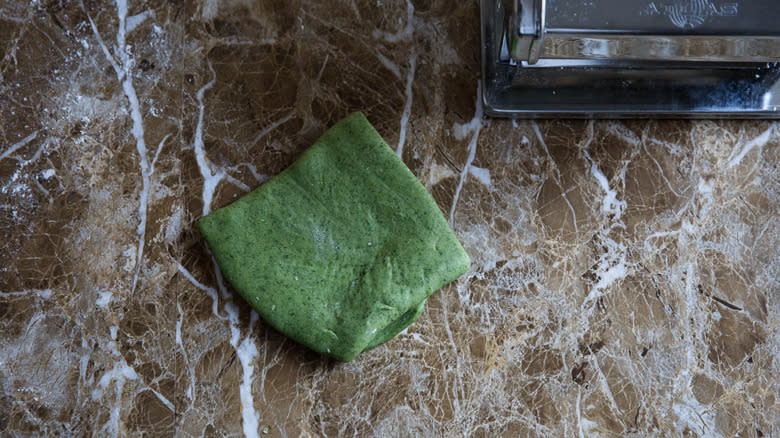
Tuck under the short edges and fold the piece in half (matching the short edges).
Step 16: Roll The Dough Again
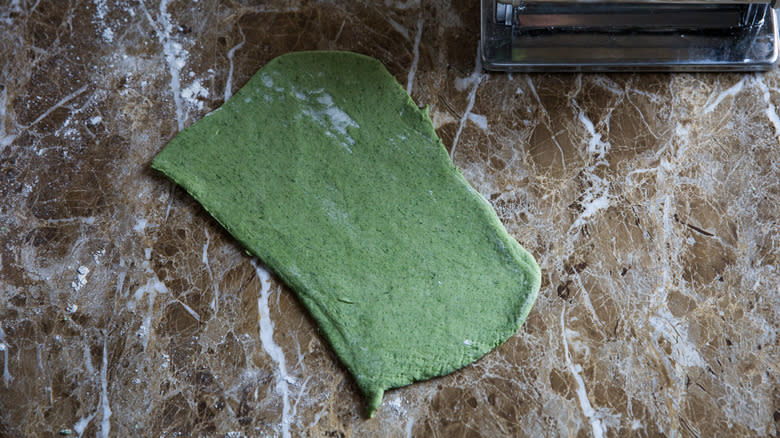
Roll the piece through the machine on the thickest setting again.
Step 17: Roll The Dough On A Thinner Setting
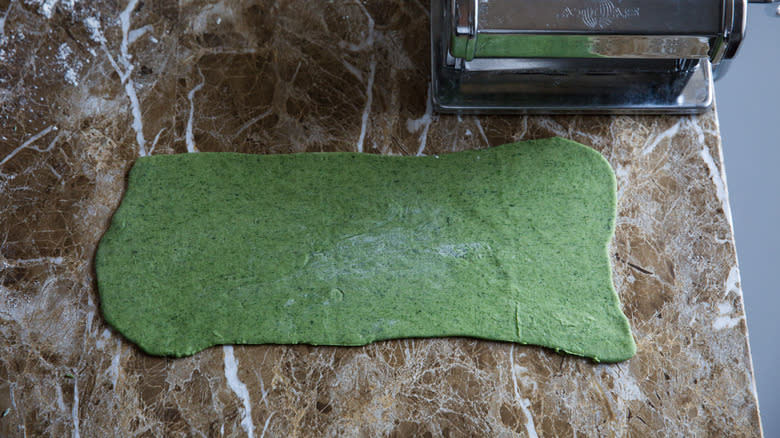
Select the second thickest setting and roll it again. If it's uneven you can fold it like in step 15, going back to the thicker setting first and then the thinner one. Try to make the piece the same width as the machine.
Step 18: Roll The Dough On The Next Thinnest Setting
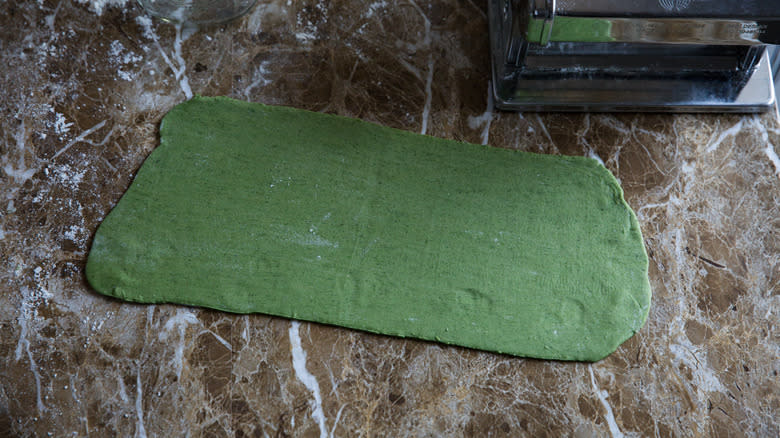
Select the third thickest setting and roll the piece again.
Step 19: Continue To Roll Dough To Desired Thinness
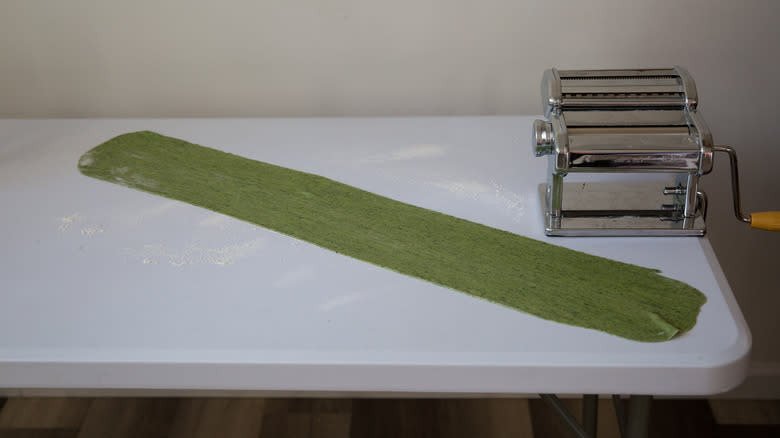
Keep repeating with thinner settings until the dough is thin but strong. It will be about ⅓ inch thick when you're done.
Step 20: Cut The Dough Piece In Half
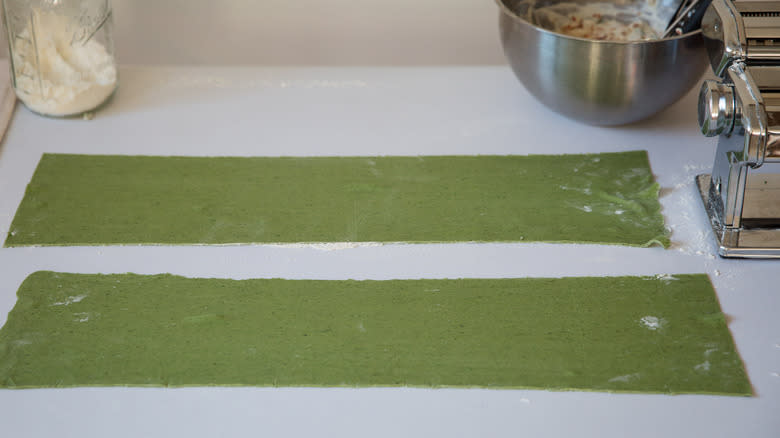
Place the piece on a lightly floured work surface and cut it in half.
Step 21: Spoon The Filling Onto One Dough Piece
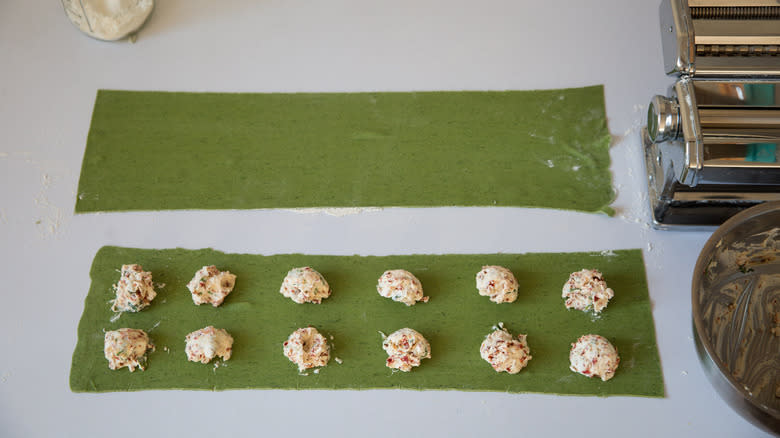
Using a melon baller or two spoons, drop small balls of filling in even intervals on one of the pieces of dough. Leave enough space between the filling balls to seal the ravioli.
Step 22: Lay The Other Dough Piece On Top
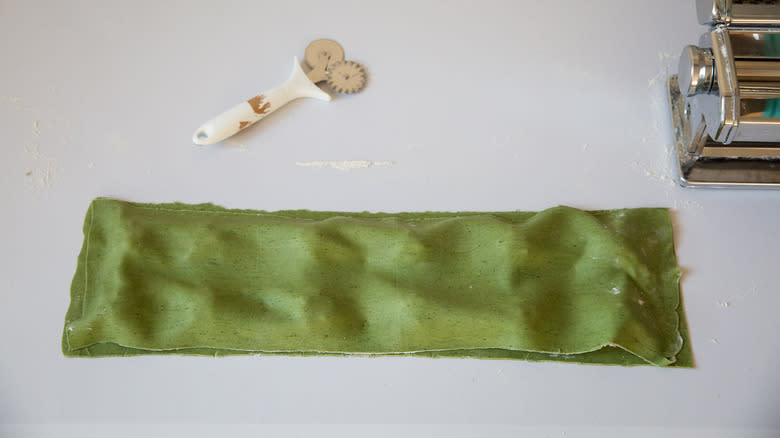
Carefully lay the second piece on top of the first piece with the filling balls.
Step 23: Press The Air Out
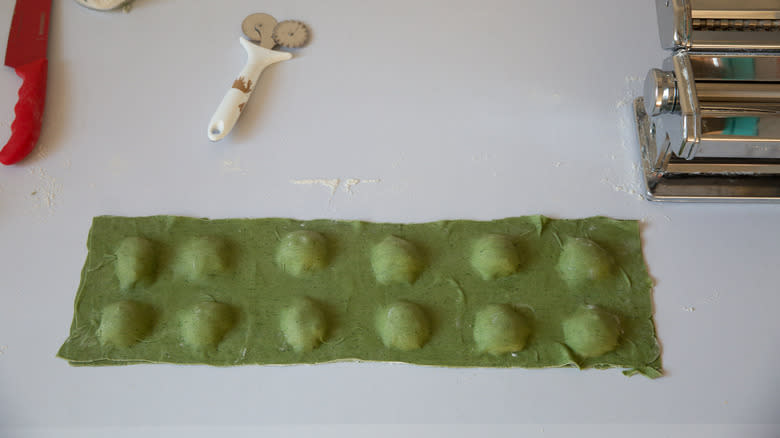
Gently press around each filling bump to push the air out and help seal the dough.
Step 24: Cut Out The Ravioli
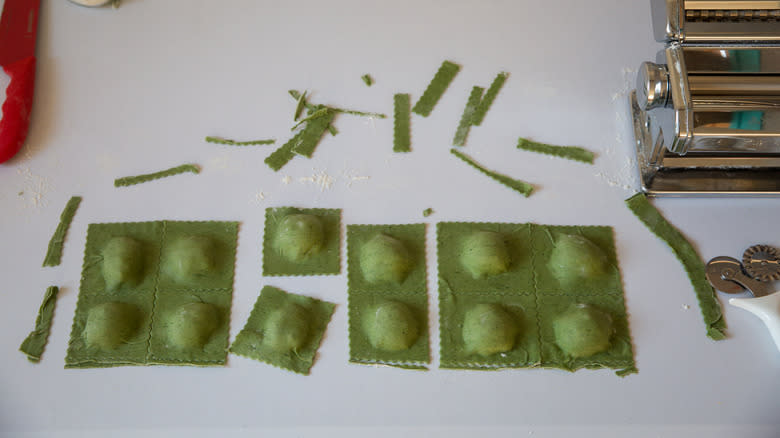
Carefully cut out the ravioli using a ravioli cutter.
Step 25: Make The Remaining Ravioli
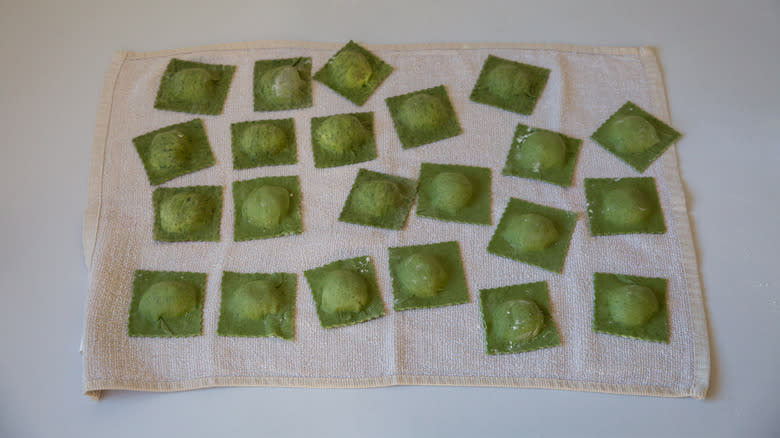
Lay the ravioli in a single layer on a towel to dry slightly, and repeat steps 13-24 with the other 3 pieces of dough to make the remaining ravioli. Make a few more from the dough scraps.
Step 26: Boil A Pot Of Water
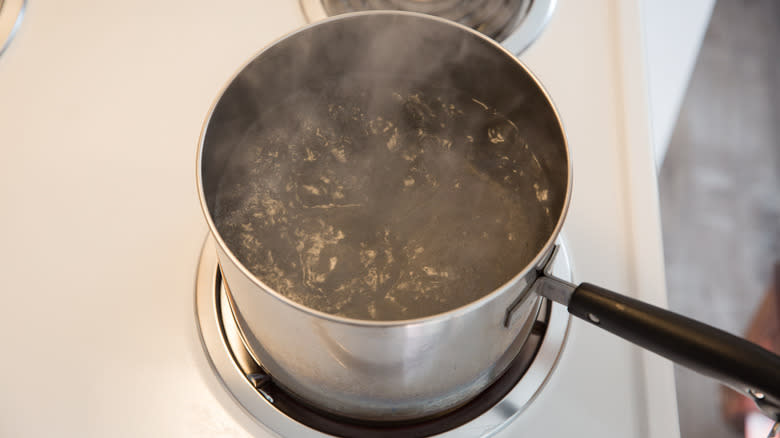
Bring a large pot of salted water to a boil.
Step 27: Melt The Butter For The Sauce
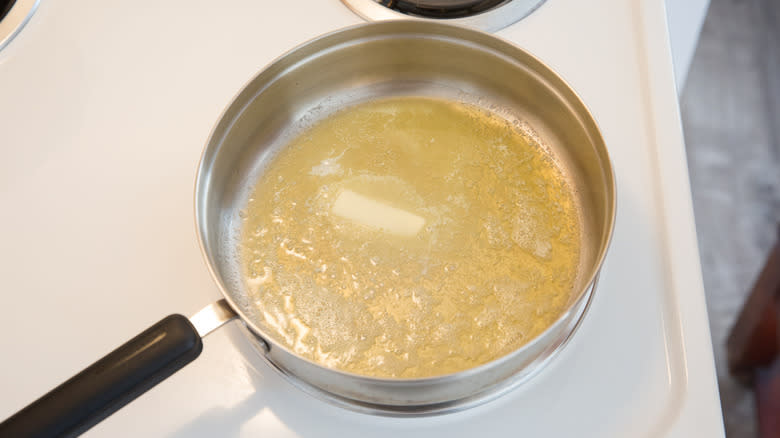
In the meantime, make the sauce. First, melt the butter in a large frying pan or skillet on medium low.
Step 28: Add The Sage Leaves
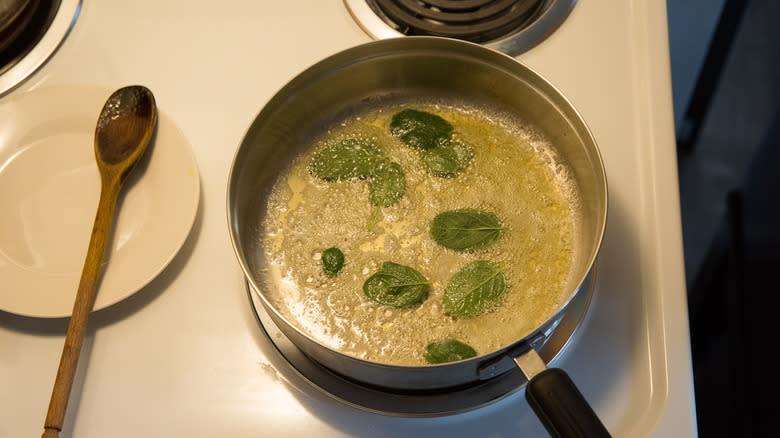
Add the sage leaves and let them cook for about a minute. Remove from the heat.
Step 29: Boil The Ravioli
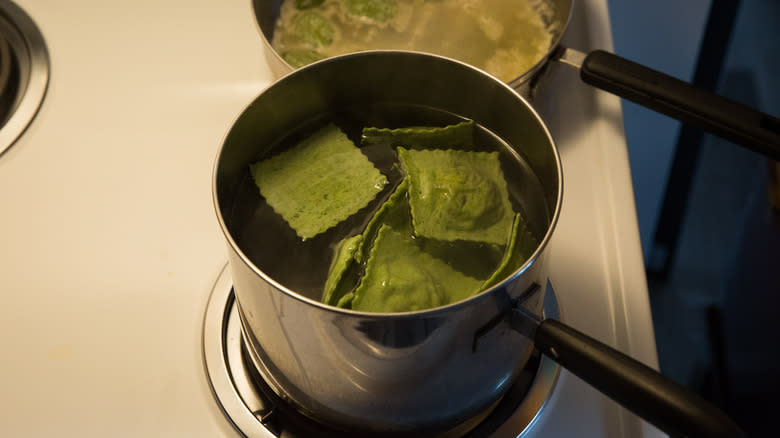
When the water boils, gently place the ravioli in the pot. Do not stir. Reduce the heat a little so they cook on a gentle boil for a few minutes. Cook the ravioli in batches to avoid crowding the pan.
Step 30: Drain The Ravioli
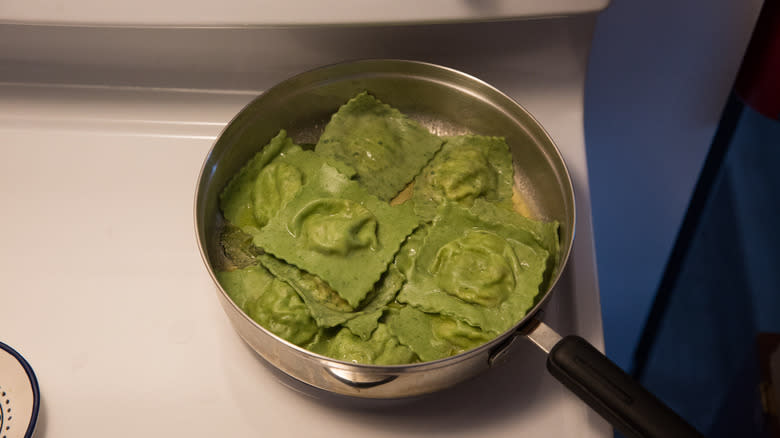
As soon as the ravioli float to the surface (after about 3-5 minutes), gently remove them with a slotted spoon and place them in the pan with the sauce to coat.
Step 31: Serve Sun-Dried Tomato And Spinach Ravioli
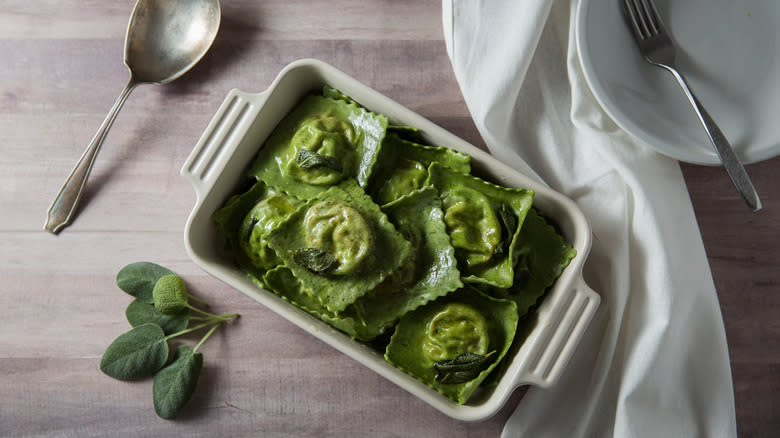
Serve immediately with grated Parmesan if desired.
Do I Need 00 Flour To Make Ravioli?
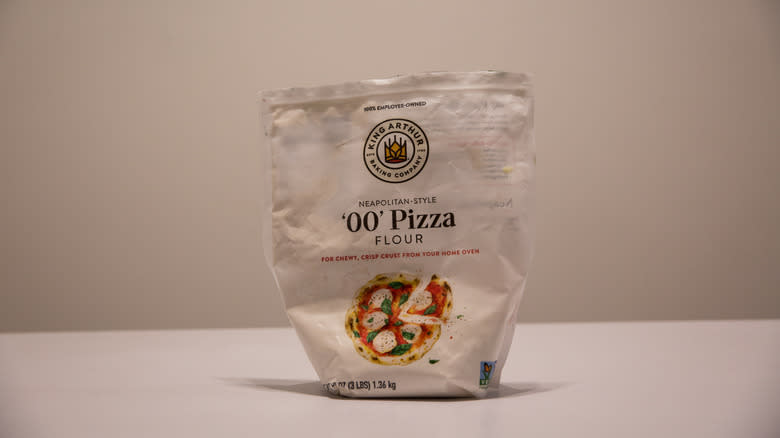
00 flour (pronounced double-zero) is the flour most widely used for making fresh pasta dough. This is an extra soft, white, refined flour, and because it's ground very finely it makes a soft, delicate dough. A smooth dough like this won't distract from the taste of the ravioli's filling. If you can't find 00 flour, you can use all-purpose flour with similar results, though your dough might be slightly coarser. 00 flour is also a good choice when your dough contains eggs. Eggs are a high-protein food, so the low protein content of 00 flour helps to achieve the desired consistency.
Another option is durum wheat semolina flour, or semola rimacinata di grano duro, which may be harder to find outside of Italy. Rimacinata means it was milled twice for a finer result. This durum wheat flour has a yellowish color, a coarser grain, and both a stronger texture and taste. It's often used with fillings that have a more robust flavor, and the ravioli will be a little chewier. For this reason, some people prefer to use a mixture of 70% 00 flour and 30% durum wheat semolina to get the best of both worlds. This is also a good choice for pasta dough that doesn't contain eggs because it has a higher protein content.
Do I Need Special Tools To Make Ravioli?
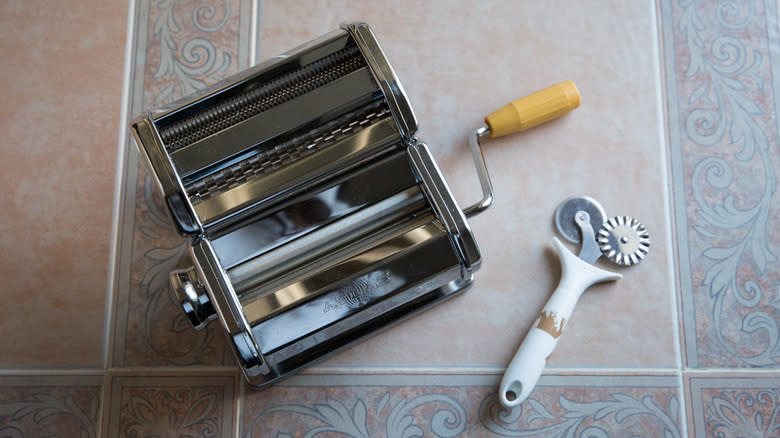
If you don't have a pasta machine, you don't need to go out and buy one just to make ravioli -- although if you're a pasta lover you may find that you put it to good use. The pasta machine is designed to make rolling the dough easier, but it's possible to achieve the same result with a rolling pin. You'll need to roll out strips of dough on a lightly floured surface until they're as thin as you want them. Try to keep the width as even as you can.
A ravioli cutter looks like a crimped pizza cutter and is used to quickly cut and seal ravioli. If you don't have one you can use a sharp knife to cut the ravioli and then seal them by either pressing the edges with your fingers or crimping them with a fork. You won't get the same wavy edges, but they'll still taste great. Instead of cutting out the ravioli with a knife, you can make circular ravioli by either using a ravioli cutter that looks like a cookie cutter with a handle or by using an upside-down glass.
How Do You Keep Ravioli From Opening When You Cook Them?

After taking the time to make homemade ravioli, no one likes to see their hard work undone if they burst open in boiling water. Luckily, there are some things you can do to help ensure your ravioli will stay together in the pot. The dough should be thin but not so thin that it will break easily. It's important to push out as much air as you can from around the balls of filling when you cover them with the second piece of dough. And make sure the filling isn't too wet, because excess moisture can "melt" the thin dough stretched on top and cause it to break more easily.
The key to keeping your ravioli intact is gentleness and careful handling when picking them up or moving them. Don't overcook the ravioli because softer ones are more likely to break. Be especially careful when taking them out of the pot and when serving them with a spoon. Never stir the boiling ravioli in the boiling water, and instead of stirring them into the butter sage sauce at the end, gently shake the pan instead to coat the pieces.
Sun-Dried Tomato And Spinach Ravioli Recipe
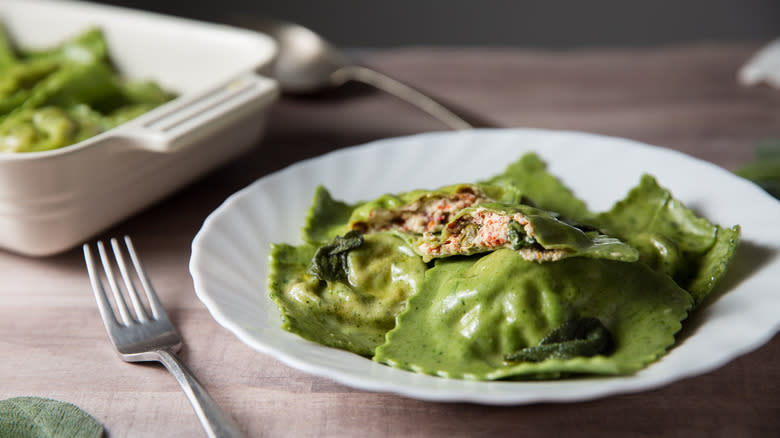
Prep Time: 2hCook Time: 33mYield: 48 RavioliIngredients
:::For the green dough:::
6 cups fresh spinach
3 cups 00 flour
4 eggs
1 generous pinch salt
:::For the filling:::
32 ounces ricotta
1 cup lightly packed sun-dried tomatoes, finely chopped (not in oil)
2 tablespoons capers, blotted dry
16-20 basil leaves, torn into pieces by hand
:::For the butter sage sauce:::
6 tablespoons butter
12 sage leaves
Directions
To make the green dough, first bring a large pot of salted water to a boil.
Cook the spinach in boiling water for 2 minutes.
Drain the spinach, let cool, and squeeze out as much water as you can. Dry it well.
Mince the spinach.
Place the flour, eggs, salt, and spinach in a large bowl.
Mix the ingredients with your hands, pinching the eggs and spinach into the flour until the mixture mostly sticks together.
Transfer the mixture to a lightly floured work surface.
Form a ball and knead for about 10 minutes, turning it a half turn each time, folding it on itself and pressing and rolling it forward with your palms. Add a very small amount of water if it's too crumbly or flour if it's too sticky.
Knead until you achieve a smooth, elastic ball that slowly springs back when pressed.
Cover the dough ball with plastic wrap or a damp towel and place an overturned bowl on top of it to keep it moist. Let it rest for 30 minutes at room temperature.
To make the filling, place the ricotta in a medium bowl, add the sun-dried tomatoes, capers, and basil, and mix well with a spoon. Set aside.
Cut the dough ball into 4 equal pieces. Take 1 piece and rewrap the other 3 pieces to keep it moist.
Shape 1 of the pieces with your hands into a flattened rectangular shape.
Roll the piece through a pasta machine using the thickest setting. Dust the piece with a small amount of flour after rolling if it's sticky or uneven.
Tuck under the short edges and fold the piece in half (matching the short edges).
Roll the piece through the machine on the thickest setting again.
Select the second thickest setting and roll it again. If it's uneven you can fold it like in step 15, going back to the thicker setting first and then the thinner one. Try to make the piece the same width as the machine.
Select the third thickest setting and roll the piece again.
Keep repeating with thinner settings until the dough is thin but strong. It will be about ⅓ inch thick when you're done.
Place the piece on a lightly floured work surface and cut it in half.
Using a melon baller or two spoons, drop small balls of filling in even intervals on one of the pieces of dough. Leave enough space between the filling balls to seal the ravioli.
Carefully lay the second piece on top of the first piece with the filling balls.
Gently press around each filling bump to push the air out and help seal the dough.
Carefully cut out the ravioli using a ravioli cutter.
Lay the ravioli in a single layer on a towel to dry slightly, and repeat steps 13-24 with the other 3 pieces of dough to make the remaining ravioli. Make a few more from the dough scraps.
Bring a large pot of salted water to a boil.
In the meantime, make the sauce. First, melt the butter in a large frying pan or skillet on medium low.
Add the sage leaves and let them cook for about a minute. Remove from the heat.
When the water boils, gently place the ravioli in the pot. Do not stir. Reduce the heat a little so they cook on a gentle boil for a few minutes. Cook the ravioli in batches to avoid crowding the pan.
As soon as the ravioli float to the surface (after about 3-5 minutes), gently remove them with a slotted spoon and place them in the pan to coat with the sauce.
Serve immediately with grated Parmesan if desired.
Read the original article on Tasting Table.

